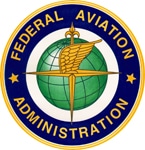
Rule will streamline approval of new technologies

“Aviation manufacturing is our nation’s top export and general aviation alone contributes approximately $80 billion and 400,000 jobs to our economy,” said U.S. Transportation Secretary Anthony Foxx. “The FAA’s rule replaces prescriptive design requirements with performance-based standards, which will reduce costs and leverage innovation without sacrificing safety.”
FAA’s new Part 23 rule establishes performance-based standards for airplanes that weigh less than 19,000 pounds with 19 or fewer seats and recognizes consensus-based compliance methods for specific designs and technologies. It also adds new certification standards to address general aviation loss of control accidents and in-flight icing conditions.
“The rule is a model of what we can accomplish for American competitiveness when government and industry work together and demonstrates that we can simultaneously enhance safety and reduce burdens on industry,” said FAA Administrator Michael Huerta.
The rule responds to the FAA Modernization and Reform Act of 2012 and the Small Airplane Revitalization Act of 2013, which directed the FAA to streamline the approval of safety advancements for small general aviation aircraft. It also addresses recommendations from the FAA’s 2013 Part 23 Reorganization Aviation Rulemaking Committee, which recommended a more streamlined approval process for safety equipment on small general aviation aircraft.
The new rule also promotes regulatory harmonization among the FAA’s foreign partners, including the European Aviation Safety Agency (EASA), Transport Canada Civil Aviation (TCCA), and Brazil’s Civil Aviation Authority (ANAC). This harmonization may help minimize costs for airplane and engine manufacturers and operators of affected equipment who seek certification to sell products globally.
The rule affects airplane manufacturers, engine manufacturers, and operators of affected equipment. Click here to learn more from the FAA and industry about the benefits of streamlined certification.
This regulatory change is a leading example of how the FAA is transforming its Aircraft Certification Service into an agile organization that can support aviation industry innovation in the coming years. The Service is focused on using risk-based oversight to refresh the certification strategy, investing in management systems to improve performance, and improving the overall organization.
The rule will be effective eight months from publication in the Federal Register.
Related News
- Operation Lifesaver campaigns to promote rail safety in 11 states
- New TD Crew Room Flyers Available
- Colorado bill criminalizing transit assault one step closer to becoming law
- Honoring the Legacy of Brother John A. Saunders
- Kansas funds passenger rail expansion
- Maryland Passes Monumental Transit Safety Bill
- Brother Wirth Crowned Champion in 168-Pound Masters Division Victory
- Chairman Pauli Announces Retirement, SMART-TD celebrates his career
- New Mexico Local 1687 sets new precedent with Red Apple Transit
- Tentative Agreement Reached With TransitAmerica Services (TASI)